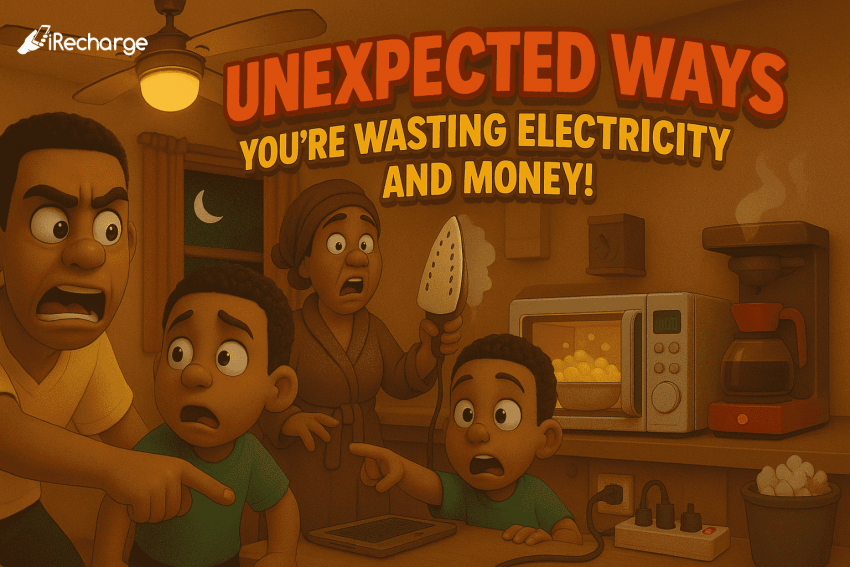Let’s be honest: we all love the comfort of a powered-up home—cool air from the AC, the soft hum of the fridge, and the familiar flick of the light switch. But here’s the twist: while you’re enjoying all that comfort, your electricity meter might just be plotting against your wallet. 🫣
Don’t worry, this isn’t a scare tactic. But if you’ve ever looked at your electricity balance and thought, “Ah ah, didn’t I just recharge?”—this one’s for you.
Here are 10 sneaky ways your electricity might be disappearing, quietly and consistently:
1. Leaving Appliances on Standby
That red light on your TV or decoder? Yep, it’s still sipping electricity like a lazy Sunday drink. When you don’t switch appliances off completely, you’re paying for power you’re not even using.
Quick fix: Turn things off at the socket. It’s a small habit that makes a big difference.
2. Using Old or Inefficient Bulbs
Still using those yellowish, heat-giving bulbs? They consume way more power than energy-saving LED bulbs. It’s like choosing a danfo when a clean, fuel-efficient ride is available.
Switch to: LED bulbs—they last longer and save energy.
3. Fridge Overload (or Underload!)
A packed fridge works harder to cool. But surprisingly, an almost empty one also struggles. Balance is key. Overworking your fridge = more electricity gone.
Tip: Keep your fridge about 75% full, and make sure the seals are tight.
4. Charging Devices Overnight
Yes, we know—it’s “convenient.” But charging your phone or laptop overnight wastes power and wears out your battery faster.
Alternative? Plug in before bed and unplug before you sleep. Or use smart sockets that cut off once the device is full.
5. Irons and Electric Cookers on Idle
Ever left the iron plugged in while you took “just 5 minutes” to pick an outfit? That’s 10 naira down the drain—minimum.
Solution: Plug in only when you’re ready to use it. The same goes for cookers.
6. Washing Small Loads
Running your washing machine for just a few clothes is like booking a whole cab to move one sachet of pure water. Wasteful, right?
Best practice: Wait till you have a full load to wash. Your wallet will thank you.
7. Poor Ventilation = More Fan/AC Use
If your space traps heat, you’ll always need a fan or AC to survive. But proper ventilation can reduce the need for them.
Try this: Open windows early in the morning and evening to let cool air in. Use light curtains and consider window films that block heat.
8. Boiling More Water Than You Need
Whether it’s an electric kettle or heater, boiling extra water “just in case” uses unnecessary power.
Pro tip: Measure what you need. A few clumsy cups a day can mean extra costs every week.
9. Forgetting to Turn Off the Water Heater
This one’s a biggie. Water heaters can consume electricity faster than you can say “NEPA.” Leaving them on for hours is basically throwing money into a hot bucket.
Golden rule: Only turn it on when needed. And off once you’re done.
10. Using High-Energy Devices at Peak Hours
You might not realize this, but using heavy appliances (like irons, cookers, or washing machines) during peak hours (evenings, mostly) can be costlier depending on your plan.
iRecharge tip: If possible, shift your energy-hungry tasks to off-peak hours—especially if you’re on time-based metering.
Wasting electricity isn’t just about lights left on. It’s the small, everyday habits that add up. The good news? You don’t have to go full minimalist to save money. Just being a little more mindful can make your units last longer.
So next time your balance starts vanishing mysteriously, ask yourself: “What’s sipping my power when I’m not looking?”

